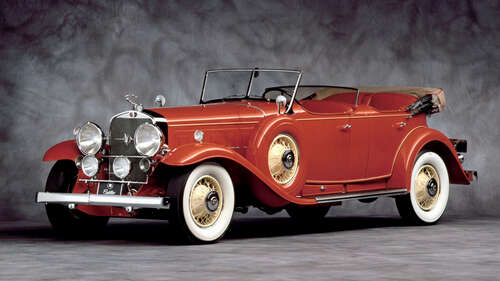
The V16 was the engine of choice for the wealthiest Cadillac customers, many of whom only ordered the rolling chassis from the manufacturer and had the bodywork custom-made by a coach builder. Many V16-engined Cadillacs that survived over time have custom bodies and are one-offs.
Some were created by Fleetwood, which in the 1930s was Cadillac’s in-house coachbuilder and made some remarkably opulent cars. LeBaron also made bodies for long-wheelbase V16 Cadillacs, but some of the most striking-looking bodies came from outside America. The Fleetwood-built body most commonly associated with the V16 is the 1940 Cadillac Series 90 Town Car by Fleetwood. It rode on a huge 141-inch (3.58-meter) wheelbase and measured 21.3 feet from tip to tail, giving ample room for passengers in the fully covered rear section (the driver’s area didn’t have a roof).
One of the most iconic V16-engined Cadillacs is the 1937 Cadillac V16 Hartman Cabriolet, a dramatic 22-foot (6.7-meter) two-door convertible. Its gorgeous Art Deco body was crafted in Lausanne, Switzerland, by Carrosserie Willy Hartmann, and it is closer in style to Figoni & Falaschi’s one-off Delahaye 165, considered one of the prettiest pre-war cars ever made.
Even though Cadillac ceased production of the V16 in 1940, it revived the name for a one-off concept unveiled in 2003. The Cadillac Sixteen had a 13.6-liter V16 engine with an output of exactly 1,000 horsepower and 1,000 lb-ft of torque. It’s regarded as one of the best Cadillac concept cars ever.

